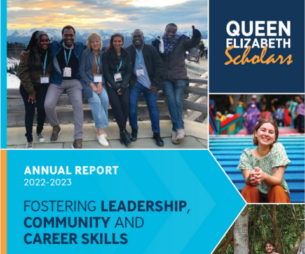Innovation agenda consultations: submission
September 16, 2016

Mobilizing people and ideas for Canada’s innovative future
Universities Canada’s submission emphasizes the role of Canada’s universities as anchor institutions in the country’s innovative future.
Recommendations for a competitive innovative strategy:
Advancing Canada’s research excellence
Universities recommend:
- Sustained and transformative investments in discovery research through the federal research granting councils to ensure Canada returns to globally competitive funding levels and is making significant progress towards reclaiming third place in the OECD for HERD investment.
- Sustained, multi-year funding for the Canada Foundation for Innovation to support its current suite of programs and a mandate for the Foundation to lead the development and implementation of a national strategy for big science.
- A supportive toolkit of approaches that combines dedicated funding envelopes to enable researchers to be both multidisciplinary and international in their research, and for granting councils to have aligned approaches and flexible policies that facilitate and support such integrative and collaborative research efforts.
Training the next generation of innovators and entrepreneurs
Universities recommend:
- An increase of federal financial assistance to Indigenous students and institutional efforts to significantly reduce the gap between the university participation rate of Indigenous and non-Indigenous Canadians within the next ten years.
- Support for more Indigenous students to pursue graduate and post-doctoral studies, growing the cohort of Indigenous university faculty and researchers and boosting their engagement in Canada’s innovative future.
- Investment in new federal measures, such as vouchers and tax credits, to incentivize employers – particularly in small- and medium-sized enterprises and not-for-profit organizations – to create more paid co-op and internship placements across disciplines and address the barriers employers face in offering such placements.
- An increase of the outbound mobility of university students to 50,000 students abroad per year by 2022, particularly by exposing our students to cross-border learning opportunities in emerging economic powers and strategic partners.
- Establishment of a simplified process for temporary work permits under the International Mobility Program will facilitate the flow of international talent to Canada’s universities.
- An extension of the Labour Market Impact Assessment exemption under the International Mobility Program to all hiring by universities for positions that support the academic enterprise, including faculty, researchers, research associates, academic physicians and senior university administrators.
- Elimination of the Labour Market Impact Assessment in the Express Entry points system and/or lowering the value of points awarded for the LMIA-supported job offer and allow for greater value to be placed on the human capital criteria to adequately recognize Permanent Resident candidates such as foreign university faculty and international graduates of Canada’s universities.
- Allocation of resources to ensure that study permit processing times are globally competitive in order to position Canada as the destination of choice for top talent.
Driving knowledge mobilization
Universities recommend:
- R&D assistance in the start-up phase to bridge the capital and financing gap between the initial idea and venture capital stages of the commercialization wave.
- Targeted support to encourage incubation and acceleration on university campuses, and to facilitate access to risk capital.
- Revisit the balance of direct and indirect government supports, with an expansion of voucher programs that help the business sector overcome their lack of internal R&D capacity in order to encourage more companies to work with universities.
Building world-leading clusters and partnerships for dynamic communities.
Universities recommend:
- Ensure a national cluster strategy requires all relevant actors – businesses, universities, governments – be a part of competitive applications to identify appropriate supports.
- Criteria used to identify clusters for support must be open and inclusive (not geographically or institutionally pre-determined) and the government may need to consider specialized criteria to ensure emerging clusters with potential to be globally competitive are considered, particularly those in smaller regional agglomerations.



